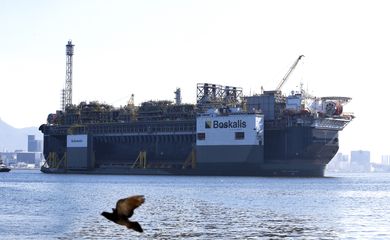Petrobras reports 41% slash in CO2 emissions 2015–23

Petrobras has reported a 41 percent reduction in carbon dioxide (CO2) emissions between 2015 and 2023. The data were released Tuesday (Apr. 30).

The result was “exceptional,” said the oil giant’s Energy Transition and Sustainability Director Maurício Tolmasquim. In last year’s report, the reduction in absolute operational emissions reached 39 percent from 2015 to 2022.
In an exclusive interview with Agência Brasil, Tolmasquim said the result means that Petrobras produced the same amount of gas and oil while emitting less CO2, even with new platforms coming into operation in 2023. This was also the best performance in the company’s history for reduced emissions.
The publication also reveals that methane emissions—the second of the three gases that aggravate the greenhouse effect—were slashed by 68 percent.
“This is relevant because, even though CO2 is more abundant, methane has a greater impact on global warming. To give you an idea, over a period of 100 years, one molecule of methane has a warming power 25 times greater than that of CO2. So reducing methane brings a vital benefit to the climate.”
For oil exploration and production, the state-controlled company is said to have achieved the lowest emission intensity—how much is emitted per barrel of oil—14.2 kilos of CO2 per barrel. The world average is around 18 kilograms.
Resilience
Another topic discussed by the director of Energy Transition and Sustainability was the resilience of Petrobras’s oil expansion plan, adding that the International Energy Agency expects to meet a global production target of 57 million barrels per day by 2050. As it stands today, the world consumes 100 million barrels a day. With the energy transition, the trend is for demand to decline.
“Petrobras must gear up for this world with lower demand,” he stated. Meeting this goal, Tolmasquim went on to argue, global warming would reach 1.7 °C—close to the ideal target of 1.5 °C.
To be part of this future world, we need to produce oil at a competitive cost, emitting fewer greenhouse gases, he said. “We’re not going to make investments we're bound to regret in the future. These are investments we believe will be profitable, even in a world that demands less oil.”
In his view, this is an important element for Petrobras’s investors, since it means that the company is being cautious and that its portfolio can adapt to the future.
In order to reduce its carbon footprint, Tolmasquin stated, the company is diversifying its portfolio of products that emit less greenhouse gases. To this end, the 2024–2028 Strategic Plan stipulates investments adding up to some $11.5 billion—of which $5.5 billion is earmarked for investments in renewable sources, or low-carbon energy, including onshore wind farms and biofuels.






